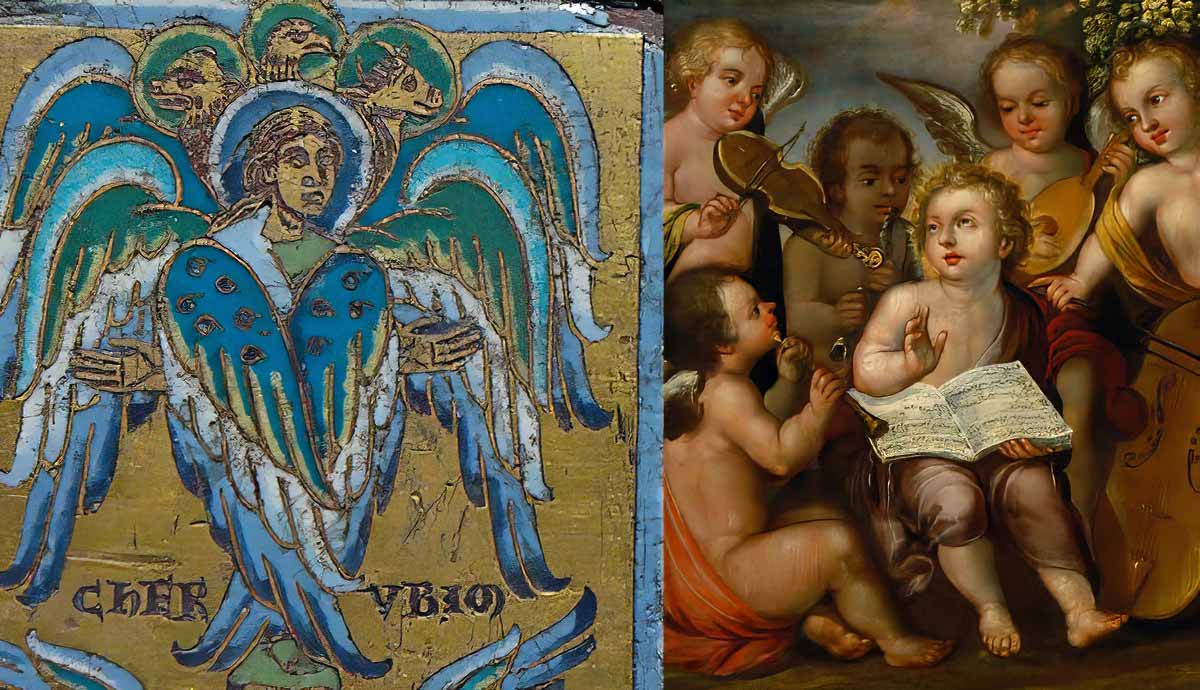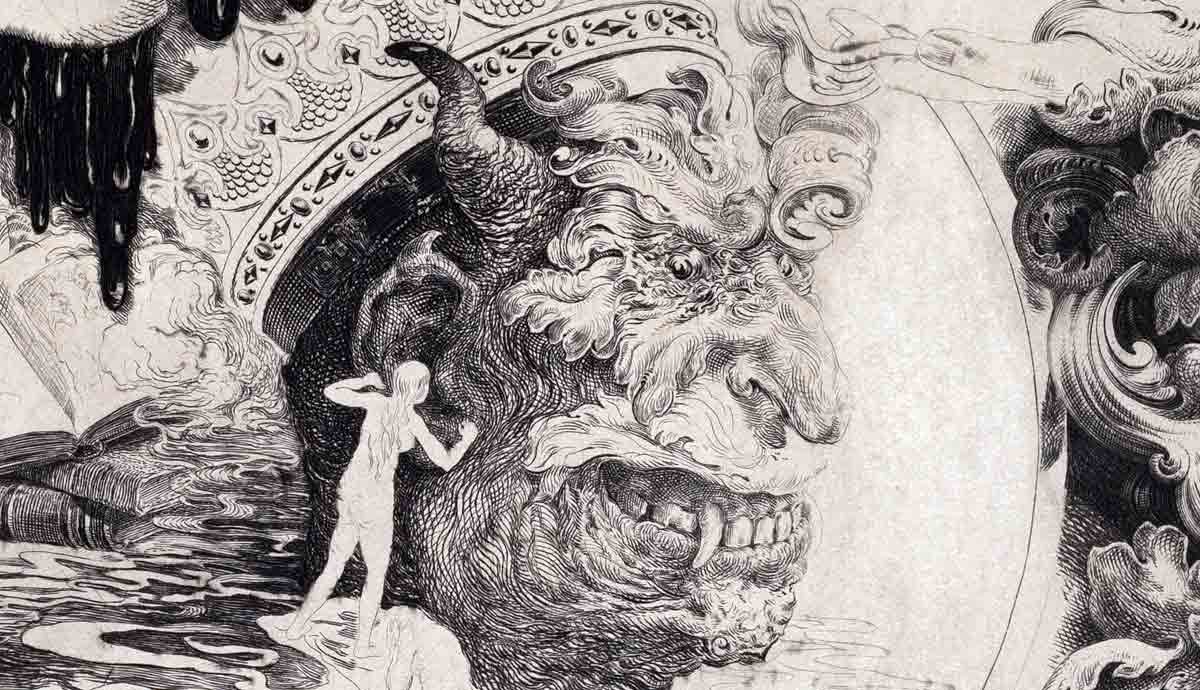
In most people’s minds biblical angels are huge creatures with two wings that shine with blinding brilliance and give a sense of peace and tranquility. That image is not derived from the Bible, but rather from popular depictions of angels. As we delve into the Bible narrative, we will find a very different picture from the stereotypical one. We will see that angels have amazing abilities, features, and functions that many people are completely unaware of.
1. Angels and Devils are Different Beings

Think about it. Lucifer, also known as the devil, Satan, the serpent, or the dragon, was an angel who was cast from heaven. When he fell, he caused a third of the “stars” to be cast down with him (Revelation 12:3-4). Stars, according to Revelation 1:20, sometimes represent angels. In this case, a third of the angels were cast from heaven with the dragon and were aligned with his purpose. Lucifer became the devil, or Satan, and the other fallen angels became his associates and devils just like him. These fallen angels, taking Satan’s lead, made war against Michael and his angels in Revelation 12:7.
There is nothing in scripture that would motivate a belief that the fallen angels’ physical appearance changed after the fall, nor does it say that they either gained or lost any abilities. The difference between the angels and the fallen angel are their allegiances. Angels remained loyal to God while fallen angels, which are known by various names (among others, devils), are aligned with Satan.
Because biblical angels are the same beings, it is easy for fallen angels to impersonate unfallen angels. That is probably why it is easy for Satan to present himself as an angel of the light. So devils and angels are the same beings. The difference lies not in what they are, but in where their allegiance is. Fallen angels did not change into a different type of being, they changed their loyalty away from God.
2. Angels are Deceased Humans or Loved Ones Watching Over Us

One common misconception about angels in the Bible is that they are the spirits of deceased humans or loved ones who continue to watch over and protect us after death. While this belief offers comfort and solace to many, it is not supported by biblical teachings.
Biblical angels are distinct beings created by God before the existence of humanity. They existed when the earth was created according to Job 38:7 and the morning stars and sons of God refer to angels. They are a separate order of spiritual beings with their own distinct purpose and nature. They are “ministering spirits sent out to serve for the sake of those who are to inherit salvation” (Hebrews 1:14 ESV).
The fact that humans do not become angels who guard over their loved ones does not negate the idea that guardian angels exist. Psalm 91:11 clearly establishes the concept of guardian angels. The idea that there is a relation between these guardian angels and people who have passed away is not biblically founded.
3. Angels Only Appear as Winged Beings

Biblical angels, fallen or not, have the remarkable ability to appear in physical form as themselves, as a variety of other beings, or to remain unseen by some or all earthly beings. They can easily hide their angelic nature.
This is evident from the devil appearing as a serpent in the garden of Eden. The Bible does not present the serpent as a metaphor for Satan. Later references to the serpent in Eden do not indicate that it was a symbolic reference either. The Bible speaks of this event as if Eve saw and spoke to a physical snake.
In other instances, angels appear as normal human men. This was the case with the three men visiting Abraham in Genesis. When two of the three men left, they were described as angels as they went to Lot and his family before the destruction of Sodom and Gomorrah.
4. All Biblical Angels Have the Same Status

The Bible introduces the reader to different types of angels, which may reflect hierarchy or function. The first angels we are introduced to are the cherubs that protected access to Eden where the tree of life was. Cherubs are featured on the cover of the Ark of the Covenant. This class of angels is associated with service in the presence of God.
Another class of angels are the seraphim. They are only mentioned in Isaiah and, like cherubim, minister around God’s throne. This class seems to have a higher standing and more important function than other angels.
Later in Genesis the reader is introduced to angels without a specific class being assigned. In some cases, the angel is designated as the angel of the Lord, and in others, they are mentioned by name in addition to being called an angel, as with Gabriel. The term angel means messenger and seems to be used as a general term for heavenly beings. Sometimes even cherubim and seraphim are referred to only as angels.
The early church fathers believed that thrones, dominions, principalities, and powers (Ephesians 3:10; Colossians 1:16) also refer to different classes, hierarchies, or roles of angels. If they are correct, these terms are not clearly defined, and it is difficult to determine exactly how they fit together.
5. Angels Have Two Wings

Almost all images and iconography featuring angels depict them as beings that have two wings. There is not a single verse in the Scripture that indicates that biblical angels have two wings.
Seraphim, are a class of angels that minister in the presence of God, and have six wings. Isaiah describes them as covering their faces and their feet, with two more for flying. In Ezekiel 10, there is a detailed description of the four cherubs that serve God’s throne. Verse 21 says they have four wings each, with something that looks like a man’s hand being under their wings.
In Revelation 4 there are mysterious creatures that are difficult to identify because they have some attributes that align with seraphim, some that align with cherubim, and some that align with both seraphim and cherubim. They have six wings and sing the Trisagion like the seraphim, but have various faces, and are four in number like the cherubim in Ezekiel. These creatures serve in God’s throne room, which seraphim and cherubim do.
So, the only specific number of wings of heavenly beings that the Bible mentions are four and six, never two. It may be that we assume angels have two wings because we depict them as beings with bird-like wings. Who knows, maybe their wings are more like those of bugs?
6. Angels Can Procreate

The images of Cupid from Greek mythology and angels portrayed as babies may create the idea that angels can procreate and spawn more angels. Depictions of infant angels were common throughout history and are still associated with special celebrations such as Valentine’s Day.
Apocryphal works, such as the Book of Enoch, do refer to angels procreating, but with human women, not with female angels. Within the biblical context, there is not one reference to romantic pursuits by angels of any class.
Biblical angels do not marry, which is a subject Jesus touched on in Matthew 22:30 and Mark 12:25. These two narratives relate the same event and, read alongside the moral principle that procreative activity should be limited to the marital relationship, would imply that angels do not procreate.
Within the biblical context, angels are always spoken of as male beings. There are no references to female or infant angels in the biblical canon. Even when angels appear in other forms, whether it is as a serpent or in human form, they are presented as male.
Misconceptions About Biblical Angels

Many of the concepts we have regarding biblical angels are based on traditions rather than what the Bible says. When we consider the text, these preconceived ideas are clearly incorrect.
Angels and devils are the same beings, and the idea that they are not may be rooted in the fact that angels and devils are depicted very differently in paintings, sketches, and drawings. Angels are not deceased humans who take that form after death, but rather creatures created long before humans existed.
The Bible never describes angels as beings with two wings. We do, however, find angels that seem to have different levels in a hierarchical structure, such as cherubim and seraphim which have four and six wings respectively. Baby angels, often depicted on Valentine’s cards or in classical paintings, are also not true representations of biblical angels.









